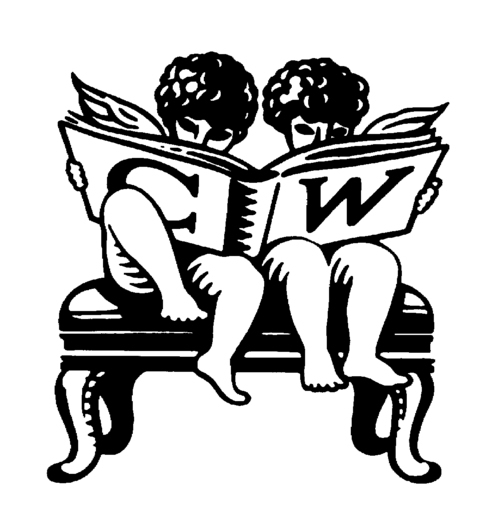Chatto & Windus Ltd. Archive

The firm that became Chatto & Windus in 1873 originated in the 1850s from the bookselling business of John Camden Hotten.
He set up his publishing business after a trip to America and he was to go on to introduce many American writers to English audiences; in time his list included Mark Twain, Edgar Allan Poe and Walt Whitman.
On Hotten’s death in 1875, his employee Andrew Chatto acquired the business with a sleeping partner,W.E. Windus, a poet. The company acquired much of the stock and copyright belonging to Henry George Bohn, and cemented its reputation as an eminent general and fiction publisher. The list included the works of Wilkie Collins, R L Stevenson, some later works of Thomas Hardy and some vintage Trollope. Andrew Chatto retired in 1911. During this period, Chatto & Windus published a number of magazines, including ‘Gentleman’s Magazine’, ‘the Belgravia’, ‘the Idler’ and ‘Drama‘.
Charles Prentice succeeded Spalding as senior partner, supported by Harold Raymond. Having watch the firm grow in stature, Prentice retired in 1934. John McDougall and Ian Parsons subsequently joined Raymond as partners; after the war, when McDougall left to head up Chapman & Hall Ltd, Norah Smallwood, who had been in charge of design throughout the war, became a partner in 1945.
In 1946 the firm acquired The Hogarth Press, which had been established by in 1917 by Virginia and Leonard Woolf . The Press retained its independence, and indeed it later became an independent company; Leonard Woolf remained on the board until his death in 1969. He brought many distinguished books to the firm including the complete works of Sigmund Freud, and books by Laurie Lee, Henry Green, Christopher Isherwood and Laurens van der Post.
Chatto & Windus became a limited company in 1953 and In 1969 Chatto & Windus merged with Jonathan Cape, with all three imprints being retained, as was The Bodley Head when it joined the firm in 1973. In 1987 the group was purchased by Random House. English and American literature were the strengths of the list.
PERMISSIONS
Readers will need the written permission of Penguin Random House before consulting material in this collection.
CONTENTS
The collection consists of correspondence files 1915-1990s; out letter books 1873-1990s; author’s accounts 1872-1945; stock books 1862-1995; profit and loss ledgers 1920-1947; reader’s reports 1915-1990s; newspaper cutting albums of reviews 1909-1965; newspaper cutting albums of advertisements 1914-1960; 1963-1966; artwork files including some original artwork 1940s-1990s; and author publicity photographs 1940s-1980s.
The bulk of early correspondence files were lost when they were sent for salvage in 1915 to help with the war effort.
Some material comes from the subsidiary firms John Camden Hotten, Saunders Otley & Co., Sussex University Press, and Christopher’s.
- CW 1-597: correspondence files concerning much of the company’s publishing output. C.7,500 files; c.1915 – 1990s.
- CW A: Letter book, each containing bound copies of outgoing letters from Chatto and Windus and the companies it superseded: John Camden Hotten and Saunders Otley and Co. Each volume has have an index to correspondents at the front of each volume; 1863 -1955.
- CW B/1: Author’s account ledgers; 1874 – 1923.
- CW B/2: Stock books; 1882-1982.
- CW B/3: Profit and loss ledgers; 1920-1947.
- CW C: Newspaper cuttings albums; 1909-1965.
- CW D: Advertisement books. Newspaper and magazine cuttings of adverts placed for various Chatto & Windus titles; 1914 -1966.
- CW E: Manuscript entry books. Used to record the details of all manuscripts sent to the company; 1876 -1989.
- CW AW: Artworks files. Original illustrations considered for book covers. Incorporates designs from Hogarth Press publications; 1920s – 1990s.
- CW R: Review files; 1965-1995.
- CW RR: Reader’s reports. A report was created for each manuscript submitted. Not all parts of this collection have been catalogued, and reports for some published works are missing; 1915 onwards.
MORE INFORMATION
- A full description is available on our online database
Other Publishing Firms acquired by Chatto & Windus
Christophers: The London publishing house of Christophers became part of Chatto & Windus in the 1960s; the firm’s educational list had been taken over in 1954 and was renamed Chatto & WIndus (Educational) Ltd in 1958.
CVBC: The publishing firm of CVBC was founded in 1982 when Chatto, Bodley Head and Cape bought Virago.
John Camden Hotten: John Camden Hotten ran a printing and publishing firm which published works by Rossetti, Swinburne, Whitman and others, from the 1850s to the 1870s. Hotten died in 1873 and his firm was absorbed into Chatto & WIndus.
Saunders, Otley & Co: began publishing in the 1820s. The firm eventually became one of the component or subsidiary firms of Chatto & Windus.
Oliver & Boyd: the children’s list of Oliver & Boyd was acquired in 1968 and books were thereafter published under the imprint of Chatto Boyd & Oliver
The firm also published books under the imprint of the Scottish Academic Press (in partnership with the Universities of St Andrews and Dundee) and Sussex University Press